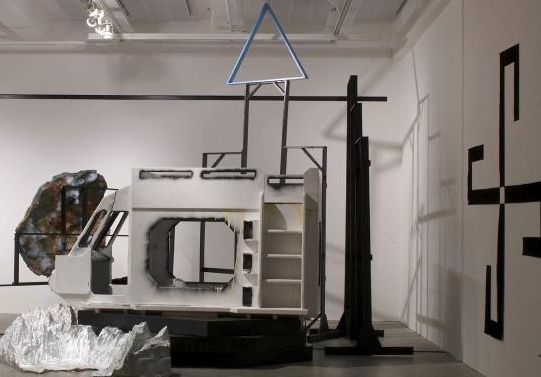
Here’s one of the biggest problem with controversy in contemporary art: once it sparks, people stop really looking.
I didn’t see UCLA’s Wight Biennial this year. LA Times critic Christopher Knight didn’t see it. And it’s quite possible that Diane Haithman, also of the LA Times, didn’t see it either. Nonetheless, we all felt compelled to respond to the “dust up” that occurred when a certain piece was removed from the exhibition without the artist’s consent.
Using an event or artwork that you haven’t actually experienced to talk about issues you think are important can be an immensely problematic move. But it’s a move people make all the time, especially in fields like journalism, where quick turnaround is the name of the game. And while commenting on what you haven’t experienced sometimes leads to interesting discussions, this kind of negligence is almost always bad for the art.
As controversies go, the 2008 Wight Biennial is a fairly small one, but that doesn’t mean it’s not indicative of what often happens when artwork becomes the focus of press-fueled debate. The Wight controversy, as I first encountered it in the LA Times and White Hot Magazine, went something like this…
The Wight, a bi-yearly student-curated exhibition at UCLA, is nearly installed. On September 23, artist Maya Lujan arranges her large-scale work, White Magic and Xanadu, in the gallery, hanging a black velvet mandala on the wall. The next day, she receives an email from Alex Segade, Matthias Merkel Hess, Jennifer Gradecki and Wu Ingrid Tsang, the show’s curators, asking her if the wall piece is necessary. She enters the gallery on September 25, the night of the opening, and finds that her mandala has been de-installed without her permission. A showdown of sorts ensues (and now I’m referencing White Hot’s account), in which the curators tell Lujan to either accept the removal of her wall piece or to de-install the whole work. Lujan chooses to remain in the show and, in the aftermath of this purported censorship, it is suggested that the curators were unsettled by the mandala’s resemblance to a swastika. Perhaps they removed it so as to avoid controversy.
This story could certainly be (and has been, for a handful of bloggers and art writers) the basis for some age-old conversations about censorship, the power of symbols, the artist’s freedom of expression, the license of curators, etc. But what if these are just default issues that become easy to talk about whenever art “controversies” arise? Swastikas are loaded symbols and censorship certainly has a sordid history, but what happened in a small, student-curated exhibition full of emerging artists is likely a little more complicated.
Wight curator Alex Segade said of the Times‘ coverage of the show, “I noticed the knee-jerk suggestion that the students or the department were too ‘politically correct’ to show [Lujan’s] piece. The article played right into a simplistic view of art school that simply isn’t its reality.” According to Segade, “we had explicit depictions of anal sex, a vagina smoking a cigarette, and posters of the logo for the SLA, a terrorist group, in the show.” The Wight’s curatorial committee was by no means averse to provocation, which suggests that the swastika-related censorship claim may be a slack abbreviation of the decisions made surrounding the exhibition.
“I have wondered why the work itself has not been considered on a critical level, and why other work in the show has gotten no attention at all,” Jennifer Gradecki, also a member of the curatorial committee, wrote via email. “As a student and an artist, this emphasis is disconcerting.”
I’m a big fan of what Jennifer Doyle said in her recent post on this blog, about how even the simplest works of art often contain some difficulty. Art, especially thoughtful art, should be difficult. It should take time. It should be experienced, considered and reconsidered, before it’s really done its job. The problem with the over-simplification that usually accompanies art world controversies is that the art doesn’t get its due.
here.




Pingback: Best of the Art21 Blog, 2008 edition | Art21 Blog